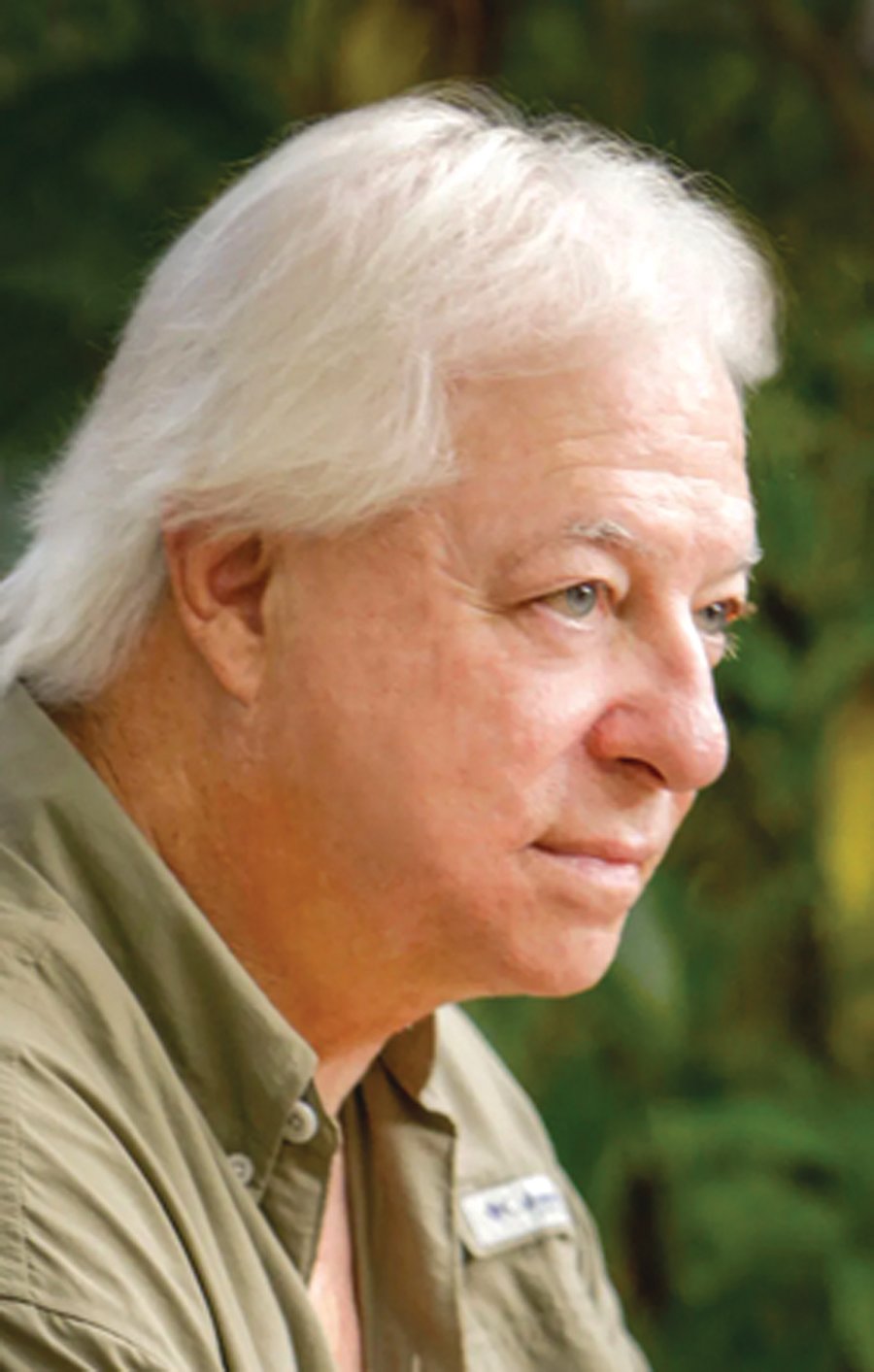Opinion: The green of winter gives us magic

Pine pollen yellows my deck, but the green of winter colors my thoughts.
Two things I like about winter. One, winter's cold bones lay the land bare. You see things that go unnoticed when leaves flutter and hide old homeplaces, an abandoned truck, a ghost bridge and woodland ponds. Two, green things stand out, and chief among the green are clumps of mistletoe on high.
But the green of winter that catches my eye most is underfoot and upon limbs.
I love seeing moss so radiant it glows, and I love seeing resurrection ferns burst into green upon the limbs of old oaks. They're stars of winter, but come spring and summer, greenery surrounds them, and, as often the case, hides them.
Moss, that small carpet-like non-flowering plant, creates a fairy-tale-like setting. Stone walkways veneered luminous green are a sight to behold, and my friend, Eddie Drinkard, says the secret to keeping them green is to keep fallen leaves off them. My mother had a fountain covered in velvety moss, and each spring when I rescued her fountains from their winter doldrums, I had to be careful with the moss, which she dearly loved. One spring a fierce blast from the hose ripped away a clump of green. Not good. She let me know her displeasure. Neither of us should have worried. Despite its magical appearance, moss is one tough plant, dating back some 450 million years, a survivor of drastic climate changes.
I love, too, seeing resurrection ferns. Their shriveled brown, grayish clumps seem to have given up the ghost, but come a rain they paint oak limbs green, giving us one of the South's classic settings. Like moss, resurrection ferns reproduce by way of airborne spores. They can live 100 years, and it's worth noting they do not harm trees.
I watched some high-speed macro video of moss ejecting its spores. It resembled a missile launch at the Cape. As for resurrection fern spores on leaves' undersides, they remind me of the strings of caps I used as a boy with toy pistols: each spot waiting for its moment to fire. Mosses fire cannons that shoot spores out at 30 miles per hour - 32,000 times the force of gravity. The spores form tiny mushroom clouds. How ironic that such lush greenness dredges up bombs and pistols, but that's nature. She takes us into strange places.
And what place might it be where my resurrection ferns and mosses grow? A favorite place that makes me think of the tropics and places literally in the clouds where mists dampen everything. In such a place I know I will see gushes of orchids, bromeliads, mosses and ferns. There the moistened undersides of fern spores smell like black pepper and crushed spices, and decaying wood yields an earthy, rich, strangely uplifting fragrance, the scent of life rising from death.Such places are places of dripping green, and in fact a vine as big as my arm dripped water. The vine was dry except where its thick, low, snake-like girth hung lowest. The water's source mystified me. There seemed to be no source.
Think of moss as a sponge the way it soaks up rain, and think of resurrection ferns as a symbol of everlasting life.
Do yourself a favor. Slow down and enjoy nature. It's good for the soul. As I said, come winter I love seeing mosses and ferns brighten bare-boned woods. Later in the season of greenery I know both will happily eject their spores, fine as dust, where they defy gravity-anticipating winds, which never fail to find them.
Now the spores face destiny. Moss spores will fall on barren rocks, fountains and walkways and flourish. Resurrection fern spores will land on broad oak limbs and prosper through drought and rain.
Each gives us magic. Each gives us memories.
Tom Poland's website is www.tompoland.net. Email Tom about most anything at tompol@earthlink.net.
More Articles to Read
